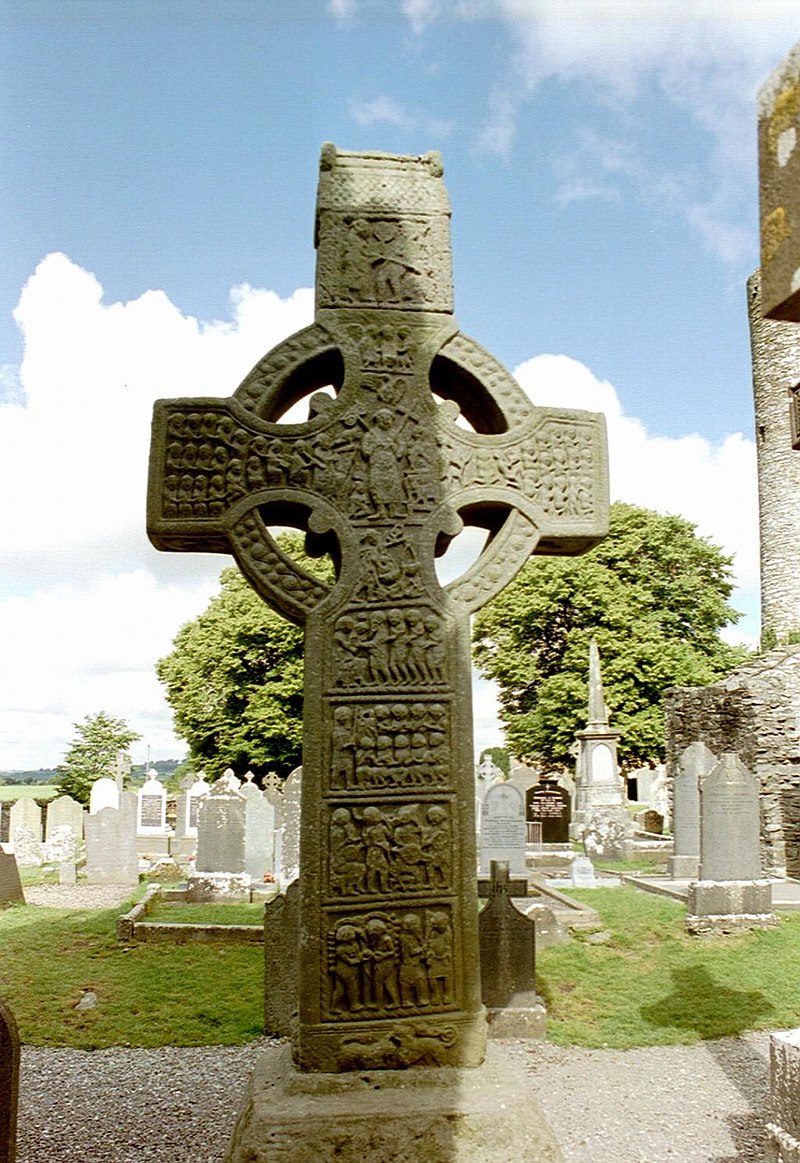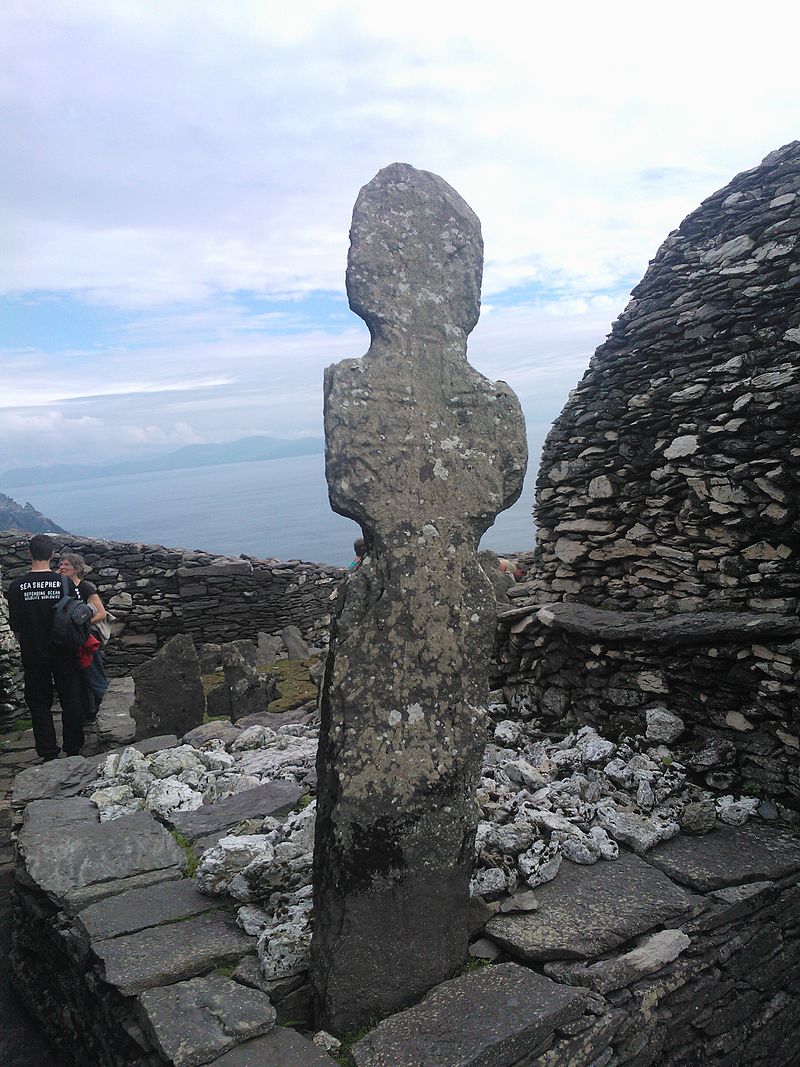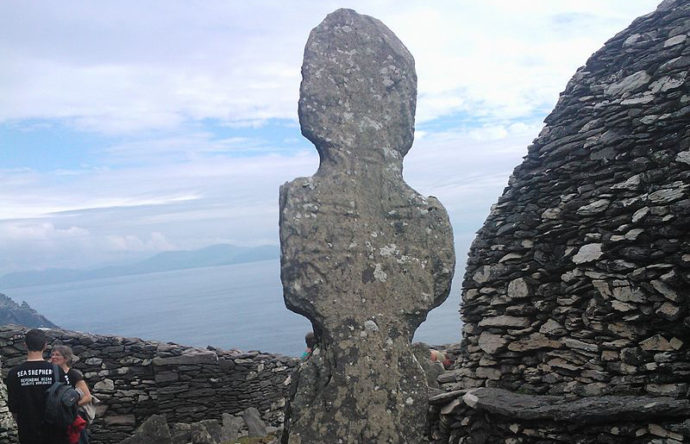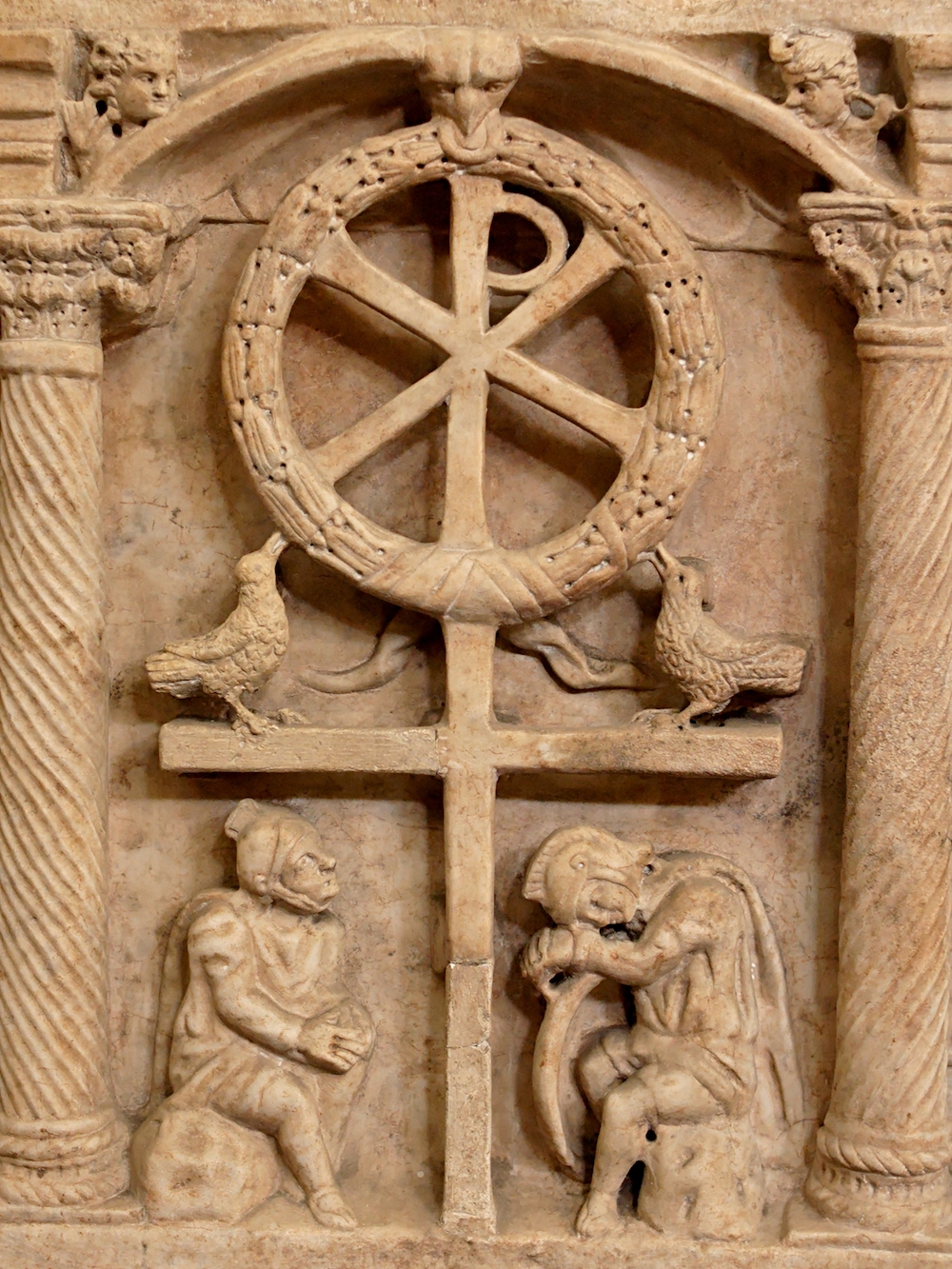Stone crosses are one of the most identifiable traits of Irish art. They are found throughout Ireland in a variety of places and date to the eighth century. Even on Skellig Michael, there exists several stone crosses scattered throughout the small island.
They were used for many different purposes. The crosses can be found at gravesides, marking the location of a burial, as well as at corners of a monastery, indicating its territory. They were also used for worship, being a central focus for liturgical services such as the Liturgy of the Hours (recitation of the Psalms) and the celebration of Mass.
In addition, the crosses served as a place where monks would perform penances, kneeling before the cross to make reparation for sins committed.
While some of the crosses are simple, with little to no decoration, many have scenes on them depicting various episodes in the Bible. Examples include Adam and Eve, Daniel and Lions, David the Harpist, The Baptism of Jesus, and the Passion of Jesus. Other crosses may have scenes related to local saints and are episodes from their lives.
Many of these crosses also contain a circle surrounding the center of the cross. Many historians believe that this is derived from early Christian art depicting a cross within a wreath.
The wreath in ancient Rome symbolized victory and was usually set upon the head of an Olympic athlete. The cross was seen in a Christian context as the banner of victory of Jesus Christ, who conquered sin and death through the cross.
In the end, the Irish stone crosses are beautiful pieces of ancient Christian art and point to the enduring quality of the cross that can weather any storm and is a sign of the victory that all can share in through Jesus Christ.
Below are a few crosses, including an early Roman cross with a wreath surrounding it, a possible inspiration for Irish crosses.




